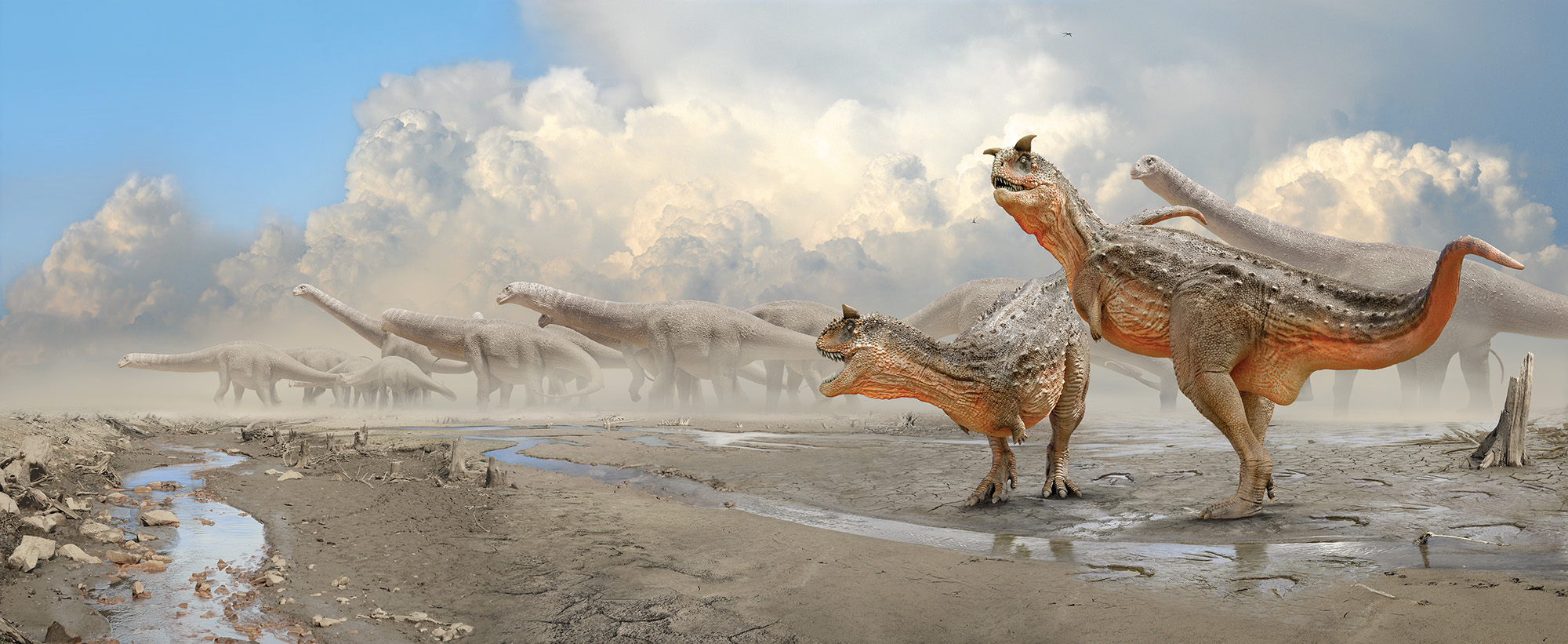Carnotaurus was a large meat-eating dinosaur. The name Carnotaurus means meat-eating bull, a reference to the prominent horns over its eyes. Carnotaurus lived in what is now South America about 70 million years ago. Carnotaurus grew to about 25 feet (7.5 meters) in length and weighed up to 2 tons. 
Carnotaurus had a short skull with a deep snout. It had broad horns that projected horizontally above the eyes. The animal had a powerful neck, deep body, and thick tail. Carnotaurus had extremely short forelimbs (arms). They were even shorter in proportion to the body than those of Tyrannosaurus. Each forelimb ended with four stubby digits (fingers). In contrast, its hind limbs were long and slender. The body of Carnotaurus was covered with tiny, pebblelike scales. Larger “feature scales” studded the body every few inches or several centimeters.
Carnotaurus was a theropod—that is, it was part of a group of predominantly meat-eating dinosaurs that walked on two legs. It was an abelisaur. Abelisaurs were a group of meat-eating theropods that lived in what are now Africa, Europe, and South America during the Cretaceous Period.
Fossils of Carnotaurus show long legs and large muscle attachment points in the tail. These features likely made Carnotaurus one of the fastest large theropod dinosaurs. Scientists estimate that the animal could have reached a top speed of 35 miles (55 kilometers) per hour. It likely had a strong sense of smell, but below-average vision and hearing.
A team led by the Argentine paleontologist José Bonaparte discovered Carnotaurus in 1984. The team found the skeleton of a single individual missing only the lower legs and most of the tail in the Patagonia region of Argentina. The skeleton was preserved in an articulated fashion, meaning each bone was still attached where it would have been in life. Extensive skin impressions were found with the skeleton. The exceptional preservation of these fossils has helped paleontologists to learn much about Carnotaurus.
